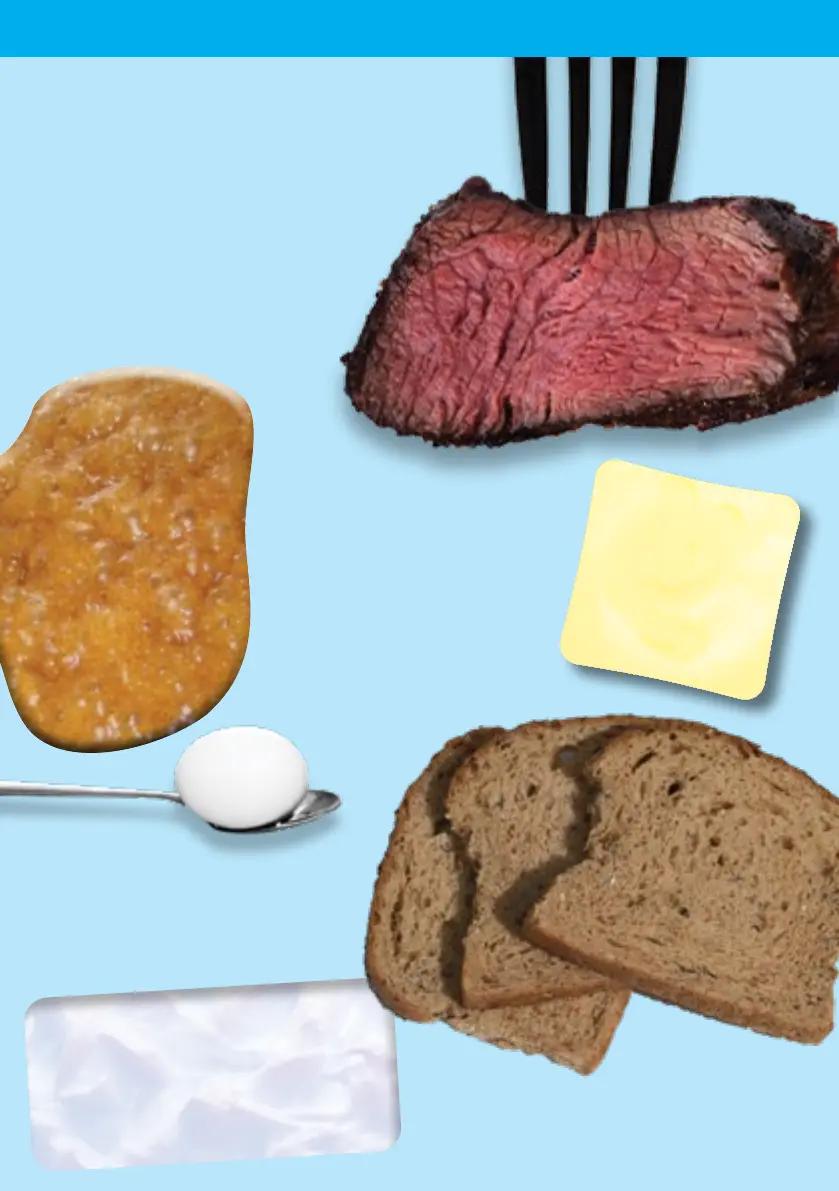Thames & Kosmos Candy Chemistry handleiding
Handleiding
Je bekijkt pagina 38 van 52

Chemical
Reactions
in the
Kitchen
When eggs are heated, they coagulate
(or become solid) because the heat
causes the proteins in the egg to
unfold and then reconfigure
themselves with strong bonds
between them.
Because oil and butter
don’t evaporate like
water does when the
temperature increases,
they are added to
baked goods to keep
them moist.
Baking soda and baking powder are used as
leavening agents in baking, to make baked
goods light and fluffy. When baking soda
reacts with acids, it produces carbon dioxide
gas. This gas is what makes cakes and cookies
rise. Baking powder is usually made of baking
soda combined with dry acids so that as soon
as water is added, the reaction begins. Heat
actually speeds up this reaction.
Sugar is added to meringue, whipped
cream, and custard, to make them
firmer, because the sugar molecules link
to the protein molecules, strengthening
the connections.
In science, it’s important to distinguish
between physical changes and chemical
changes. Simply put, a physical change
doesn’t produce new substances, while a
chemical change does. Breaking an egg is an
example of a physical change, while cooking
an egg is an example of a chemical change.
When you mix flour and baking soda, no
chemical changes occur; but when
you mix baking soda and vinegar,
you get a fizzy chemical reaction.
A special reaction called the Maillard reaction
gives caramel candies their brown color and
unique taste. In this reaction, part of the sugar
molecule reacts with the nitrogen in protein (from
the cream) when they are heated up. This same
reaction gives color and flavor to browned meats,
french fries, crusty breads, and roasted coffee.
When sugar is heated
to 320 °F, it starts to
caramelize, convert-
ing into new sub-
stances and flavor
compounds. When the
sugar gets up to 350
°F, it starts to break
down into pure car-
bon, which is why it
turns black like char-
coal or soot and
tastes burnt.
36
Bekijk gratis de handleiding van Thames & Kosmos Candy Chemistry, stel vragen en lees de antwoorden op veelvoorkomende problemen, of gebruik onze assistent om sneller informatie in de handleiding te vinden of uitleg te krijgen over specifieke functies.
Productinformatie
| Merk | Thames & Kosmos |
| Model | Candy Chemistry |
| Categorie | Niet gecategoriseerd |
| Taal | Nederlands |
| Grootte | 30778 MB |







